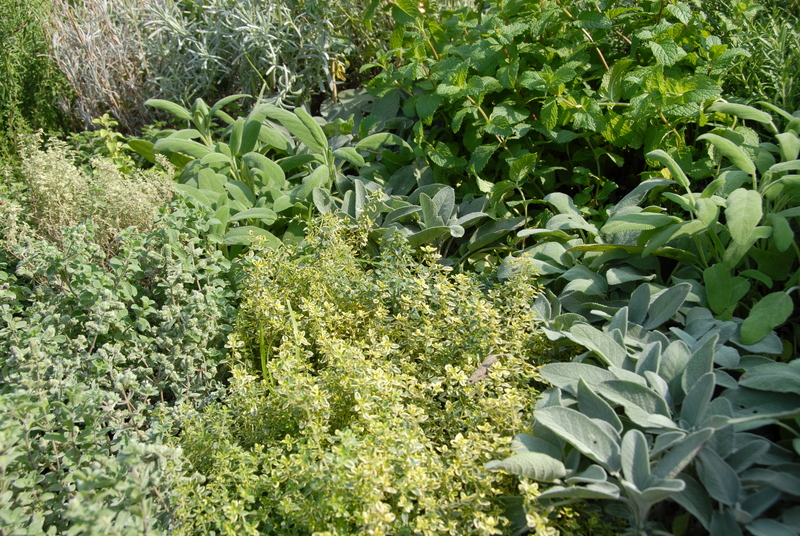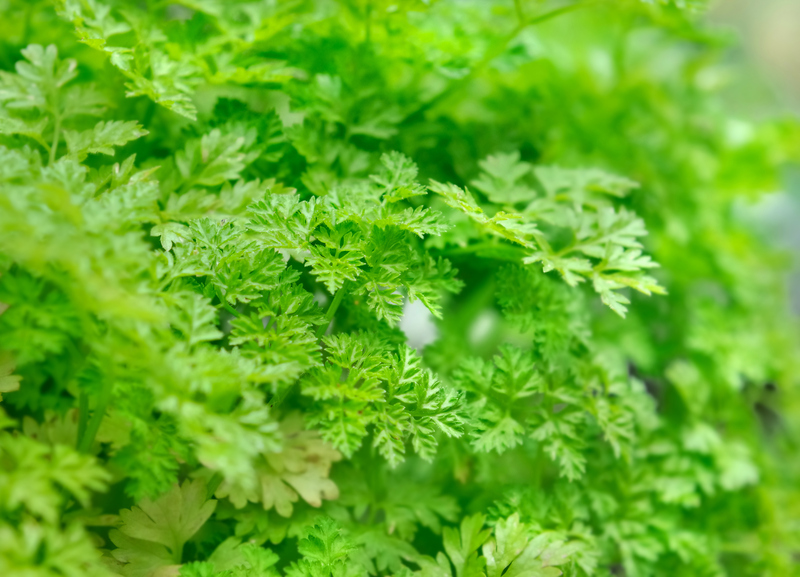Container gardening: Tips for thriving plants
Posted on 09/09/2025
Container Gardening: Tips for Thriving Plants
Container gardening has revolutionized the way urban gardeners and plant enthusiasts bring color, texture, and greenery into small spaces. Whether you have a spacious patio, a narrow balcony, or even just a sunny window ledge, there are countless creative ways to nurture vibrant, healthy plants in containers of all styles. This comprehensive guide will provide you with expert container gardening tips to ensure your potted plants flourish year-round.

Why Container Gardening?
Living in apartments or areas with limited landscaping opportunities doesn't have to limit your gardening ambitions. Container gardens offer flexibility, mobility, and unique decorative potential. Here are several benefits:
- Space Efficiency: Perfect for balconies, decks, patios, or indoors.
- Mobility: Move plants to follow sunlight, avoid frost, or redesign layouts.
- Soil Control: Custom blend soil for specific plant needs.
- Pest Management: Containers reduce the risk of soil-borne diseases.
- Diverse Planting: Grow edibles, ornamentals, succulents, and even small trees.
Choosing the Right Containers
Your choice of container is fundamental. Not every pot or planter is suitable for every type of plant. Here are essential factors to consider:
Material Matters
- Terracotta: Classic and porous, these pots allow excellent air and water movement but dry out quickly.
- Plastic: Lightweight and moisture-retentive, ideal for plants that require more consistent moisture.
- Wood: Natural appearance and insulation, but needs to be rot-resistant or treated.
- Metal: Modern and durable, though they can heat up quickly outdoors and damage roots.
- Ceramic/Glazed: Attractive and moisture-retentive, but often heavier and more expensive.
Drainage Is Key
No matter the material, all containers must have proper drainage. Stagnant water can suffocate roots and lead to rot. If your chosen container lacks holes, drill some yourself if possible. Good drainage = happy roots!
Size Matters
The size of your container determines plant growth. Too small and roots get crowded, leading to stunted development. Too large, and soil can become waterlogged. Choose a pot with at least 1-2 inches wider diameter than your plant's rootball, allowing space for growth.
The Importance of Potting Mix
One of the most crucial yet overlooked container gardening tips is to use the right potting mix. Garden soil is rarely suitable for containers - it's often too dense, can harbor diseases, and impedes drainage.
Features of a Good Potting Mix
- Lightweight and airy
- Retains moisture while draining excess water
- Enriched with nutrients
- Sterile and well-balanced
Look for potting mixes labeled for containers, often containing peat moss, compost, perlite or vermiculite, and slow-release fertilizers. For specific plants, like orchids or succulents, seek specialty mixes that suit their unique needs.
Container Gardening Plants: Thriving Choices
Selecting the right plants for your space, light, and time commitment is central to successful container gardening. Here's how to ensure you choose plants that thrive in containers:
Sunlight Requirements
- Full Sun: Most vegetables, herbs (basil, rosemary), and sun-loving flowers (petunias, geraniums).
- Partial Shade: Impatiens, begonias, mint, and lettuce varieties.
- Full Shade: Ferns, hostas, caladiums, and certain ivies.
Observe your location's light patterns throughout the day before choosing plants. The right match between plant and light ensures your container garden's long-term success.
Top Picks for Container Gardens
- Herbs: Parsley, thyme, chives, basil, cilantro (great for kitchen windowsills!)
- Vegetables: Tomatoes, peppers, lettuce, carrots, radishes--compact varieties are best.
- Flowers: Marigolds, pansies, lobelia, nasturtiums for color and pollinator attraction.
- Succulents: Echeveria, jade, hens-and-chicks - low water needs and architectural.
- Small Shrubs: Dwarf boxwood, lavender, Japanese maple varieties.
Essential Container Gardening Tips for Healthy Plants
The following tips will help you encourage lush, productive container gardens throughout the year:
1. Watering Wisely
Container plants dry out faster than those in the ground. Learn your plants' specific needs--over-watering is as big a risk as under-watering.
- Water deeply until excess runs from drainage holes.
- Check soil moisture by feeling the top inch; water when it's dry to the touch.
- Use mulch (pebbles, coco coir) on soil surface to reduce evaporation.
- In hot weather, most containers require daily watering.
2. Feeding and Fertilizing
In containers, nutrients get used up quickly or washed out with frequent watering. To keep your plants robust:
- Add slow-release fertilizer to the potting mix at planting time.
- Use liquid fertilizer (organic or synthetic) every 2-4 weeks during the growing season.
- Choose formulas suited for specific plant types (e.g., tomato food, flower booster).
3. Pruning and Deadheading
- Pinch and prune to promote bushier growth and prevent legginess.
- Deadhead spent blooms to encourage new flowers and extend blooming time.
- Trim herbs regularly to encourage fresh, tender growth.
4. Repotting and Root Care
Plants outgrow their containers. Signs include stunted growth, roots circling the pot, and quick drying. Repot every 1-2 years into a slightly larger container with fresh mix, and remove dead or circling roots.
5. Pest and Disease Management
- Inspect leaves regularly for aphids, mites, or fungus.
- Remove pests with a strong stream of water or use organic insecticidal soaps.
- Ensure good air circulation; avoid crowding and overwatering.
- Remove diseased plants promptly to prevent spread.
6. Seasonal Care and Protection
- Move delicate or frost-sensitive containers indoors or to sheltered spots as seasons change.
- Wrap pots in burlap or bubble wrap outdoors in winter to protect roots from freezing.
- Switch out seasonal plants for year-round container interest.
Design Inspiration: Creating Stunning Container Gardens
Beyond health and survival, container gardening is also about beauty! Create plant arrangements that delight you through the seasons. Consider these tips:
The "Thriller, Filler, Spiller" Formula
- Thriller: Tall, dramatic centerpiece (e.g., ornamental grass, cordyline).
- Filler: Bushy, medium-height plants to add fullness (e.g., geranium, coleus).
- Spiller: Trailing plants draping over the edge (e.g., sweet potato vine, ivy).
This classic recipe ensures balance and visual interest in any container display.
Choosing Colors and Textures
- Mix blooms and foliage in complementary or contrasting colors.
- Combine plants with different leaf shapes--broad, strappy, lacy--for texture.
- Plant in odd numbers (3, 5) for a natural, pleasing look.
Container Gardening Mistakes to Avoid
Even the most experienced gardeners encounter setbacks! Watch out for these common pitfalls in container gardening:
- Overcrowding: Too many plants create competition and limit growth.
- Underwatering/Overwatering: Find a schedule that suits your plant types and container material.
- Ignoring Drainage: Always use pots with adequate holes to prevent root rot.
- Choosing the Wrong Location: Monitor for adequate sunlight throughout the day and season.
- Forgetting to Fertilize: Remember, containers run out of nutrients faster than garden beds.
Specialized Container Garden Ideas
If you want to take your container garden to the next level, consider these unique approaches:
Vertical Gardening
- Use stacked pots, tiered stands, wall-mounted planters, or hanging baskets.
- Great for herbs, strawberries, and trailing flowers.
Water Gardens
- Create a mini pond in a watertight container--add aquatic plants like water lilies or papyrus.
- Introduce decorative stones, miniature fountains, or small fish for interest.
Edible Container Gardens
- Grow a salad garden with lettuces, radishes, and edible flowers.
- Fill a sunny pot with cherry tomatoes, basil, and nasturtium for fresh summer snacks.

Frequently Asked Questions about Container Gardening
1. How often should I water my container plants?
Frequency varies, but most potted plants need watering when the top inch of soil feels dry. Hot, windy, or sunny conditions increase the need for water.
2. Can I reuse potting mix?
It's best to replace most of your potting mix each season, especially if pests or diseases have been present. You can refurbish old mix by adding compost and slow-release fertilizer for healthy growth.
3. What's the best way to fertilize plants in pots?
Mix slow-release fertilizer into fresh potting soil and supplement with liquid feedings every 2-4 weeks during active growth.
4. Is container gardening suitable for beginners?
Absolutely! Container gardening is one of the most accessible ways to start. Many easy-care plants thrive in pots, offering fast, rewarding results even for novices.
Conclusion: Your Thriving Container Garden Awaits
With the right approach, container gardening is an enjoyable, rewarding activity that empowers you to bring life and beauty anywhere. Remember: select suitable pots, use quality potting mix, choose the right plants, and follow a consistent care routine. Whether you dream of a lush balcony, a productive patio, or an indoor oasis, these container gardening tips will help your plants thrive for seasons to come.
You don't need acres to grow a beautiful garden - just a pot, some soil, and a little passion. Happy gardening!



